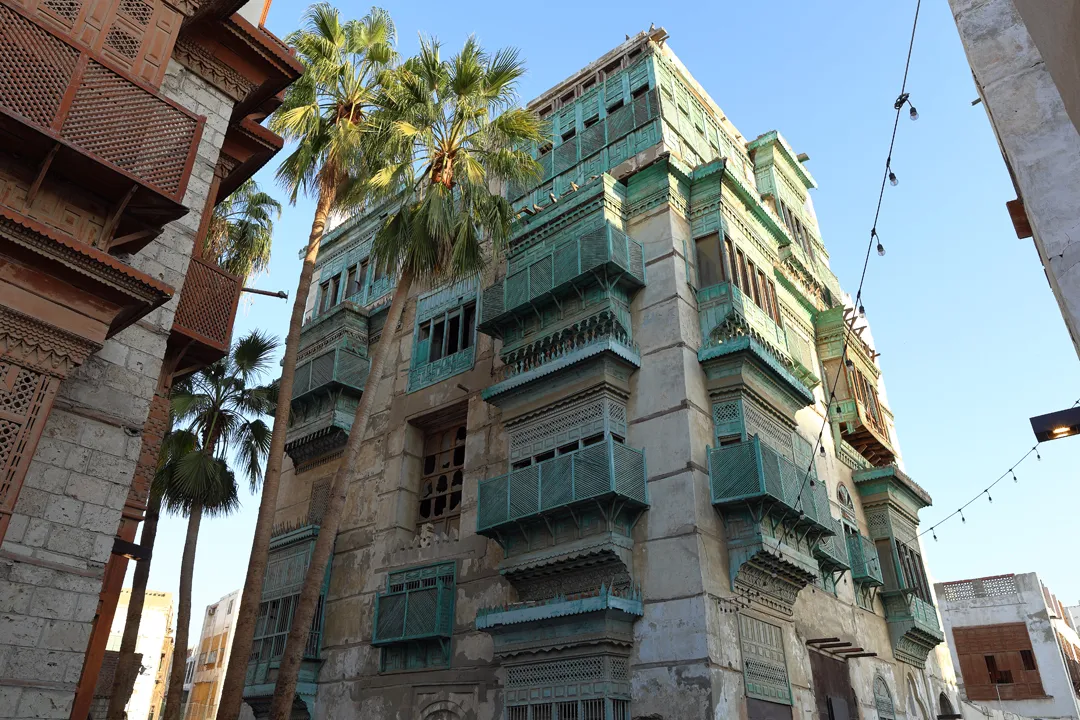Saudi Arabia is generally considered an inaccessible tourist destination in non-Muslim countries, but it is in fact the most visited country in the Middle East. In 2023, it received more visitors than Japan and almost as many as Thailand. Most visits are still for religious purposes, but since 2019, it has been possible to go to Saudi Arabia as a normal tourist.
When researching ways to get from Baku to Singapore, we found that Saudia, the flag carrier of Saudi Arabia, offers a free 1-night hotel stay when booking itineraries with long layovers in Riyadh or Jeddah. Furthermore, this method allows those who would ordinarily need to apply for a physical Saudi visa to get an e-visa online.
The only suitable flights for us involved a 32-hour layover in Jeddah, or one full day, which was reasonable. We arrived at Dubai from Baku in the afternoon and transferred to the 3-hour flight to Jeddah. The actual flight was fine, but it was unfortunate how dirty the aircraft windows were. There was so much sand on them that it was impossible to see clearly.
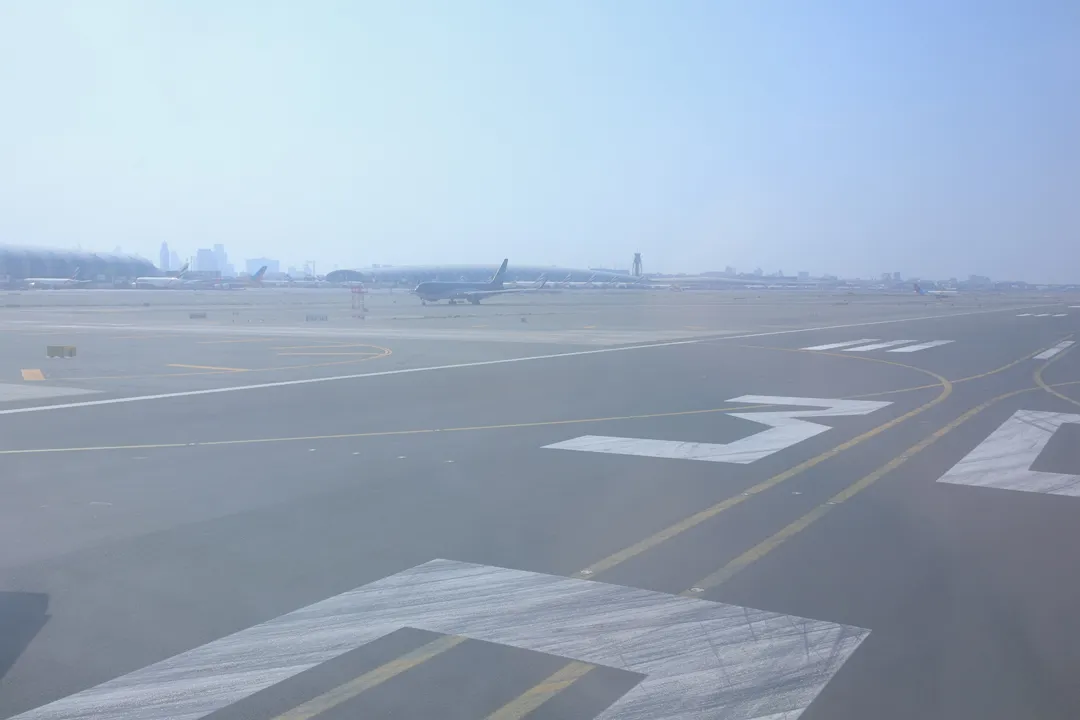
As the only flight from Jeddah to Singapore departs an hour and a half after midnight, we booked business class. This also forced us to book business class for the much shorter daytime flight from Dubai because there did not seem to be a way to select different classes for each segment. However, the chicken mandi served on this flight turned out to be the best food that I have ever eaten on any airline.
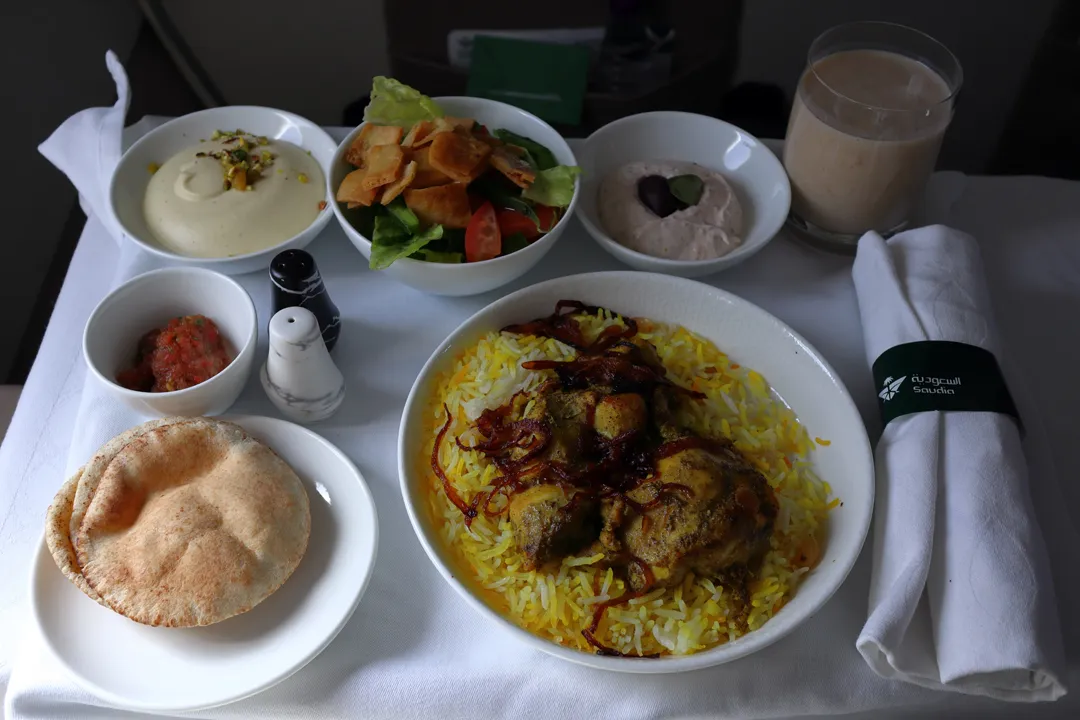
Although we landed in Jeddah on time, we then proceeded to waste more than 30 minutes looking for an ATM in the airport before getting a taxi to our hotel. Considering that we were in business class, the free hotel options were extremely disappointing. The only one that looked even remotely decent was the Casablanca Grand Hotel, and even there, we were inexplicably given a room with three single beds.
Because we had already eaten onboard the flight and additionally at the airport lounge in Dubai, we decided to forgo dinner and sleep early. The following morning, we checked out after breakfast, left our bags, and took a taxi to the Al-Rahma Mosque.
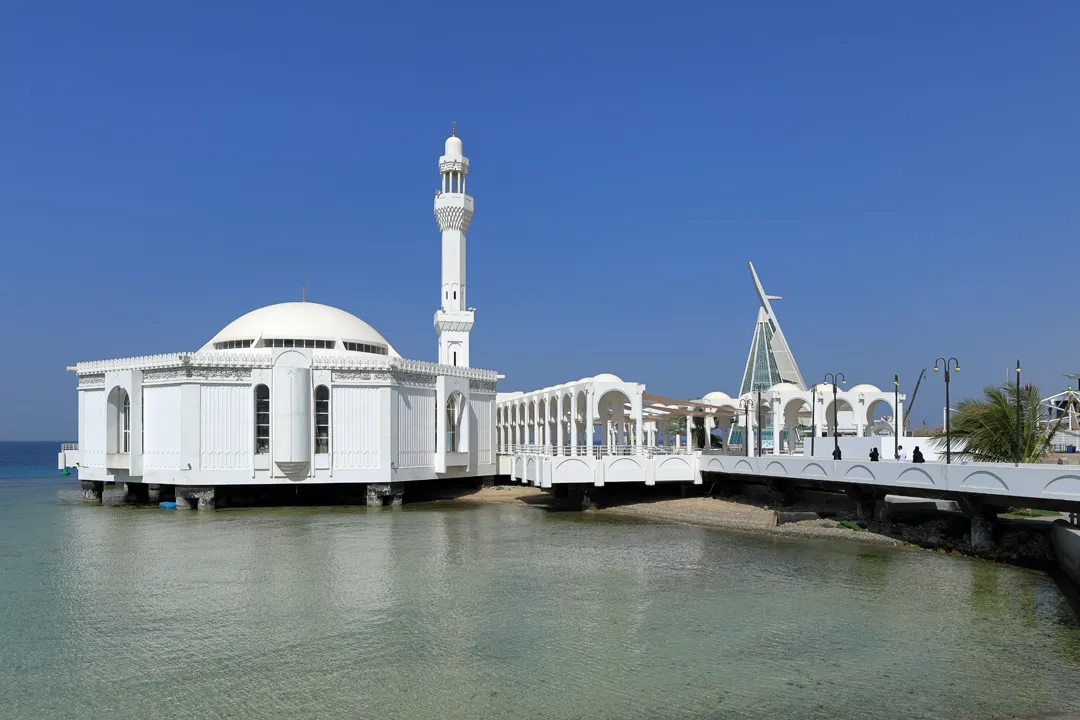
Built in 1985, it is also known as the Floating Mosque since it sits on pillars over the surface of the Red Sea.
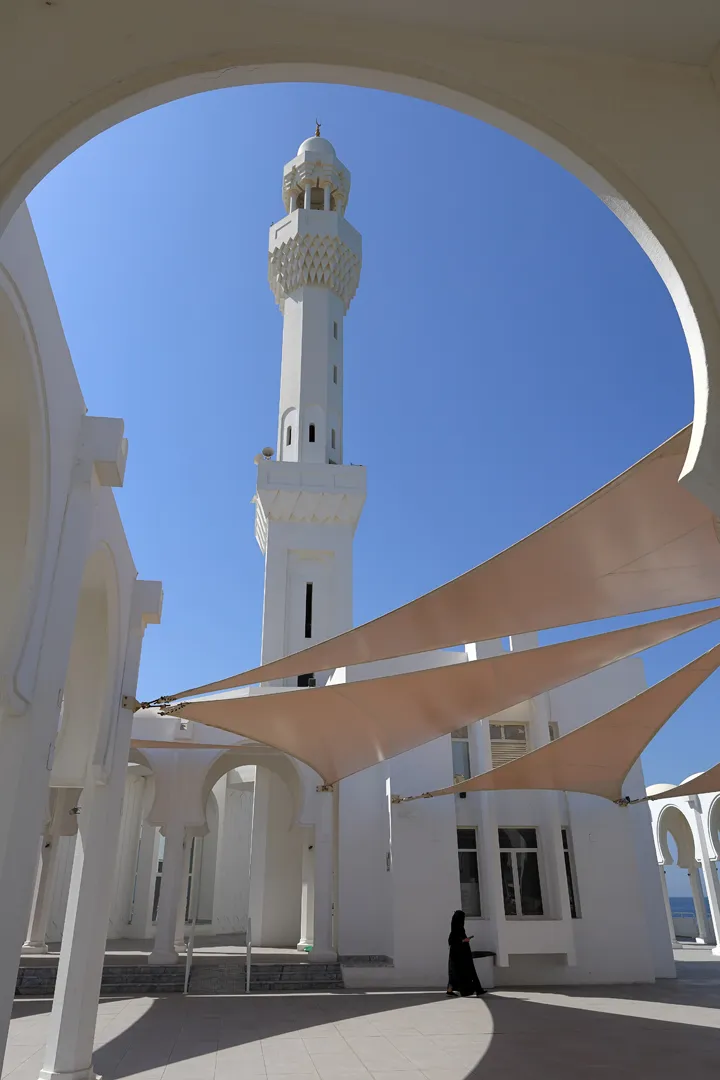
The sail-shaped elements that shade the mosque’s courtyard evoke Jeddah’s extensive maritime heritage. From the 7th century until the latter half of the 20th, Muslim pilgrims came to Jeddah by sea on their way to the holy city of Mecca, and while passengers now arrive by air, Jeddah remains the main port in Saudi Arabia for cargo, and the second busiest in the Middle East after Dubai.
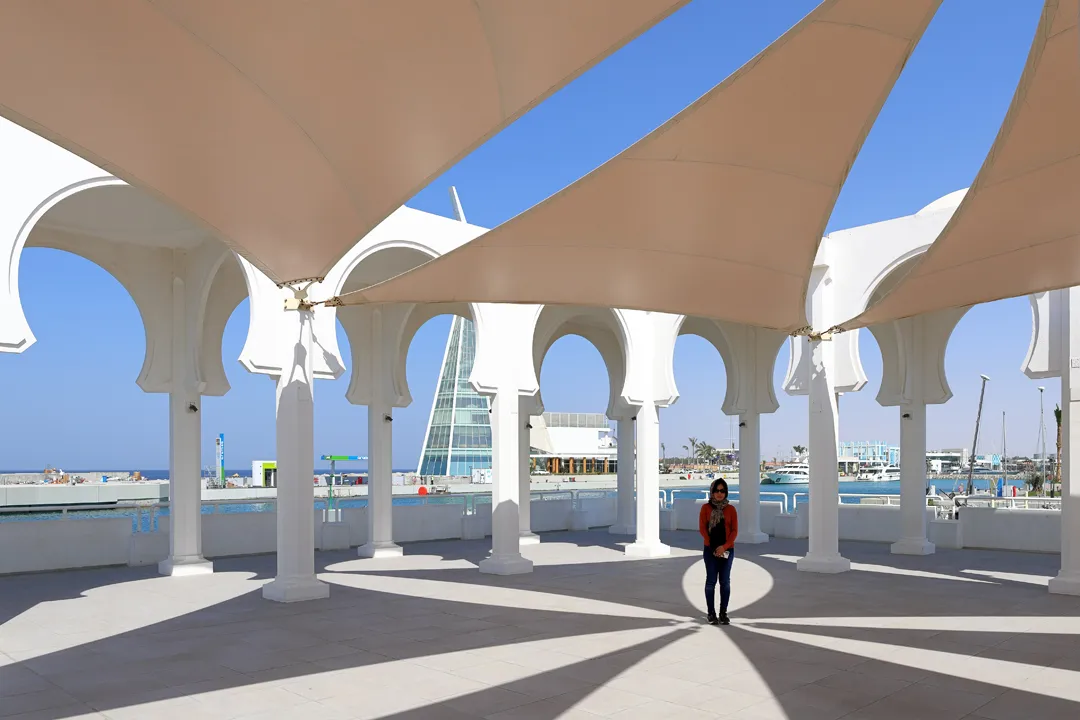
The water itself in Jeddah is very clean. Some people were fishing from the mosque and easily catching a lot of colorful fish.
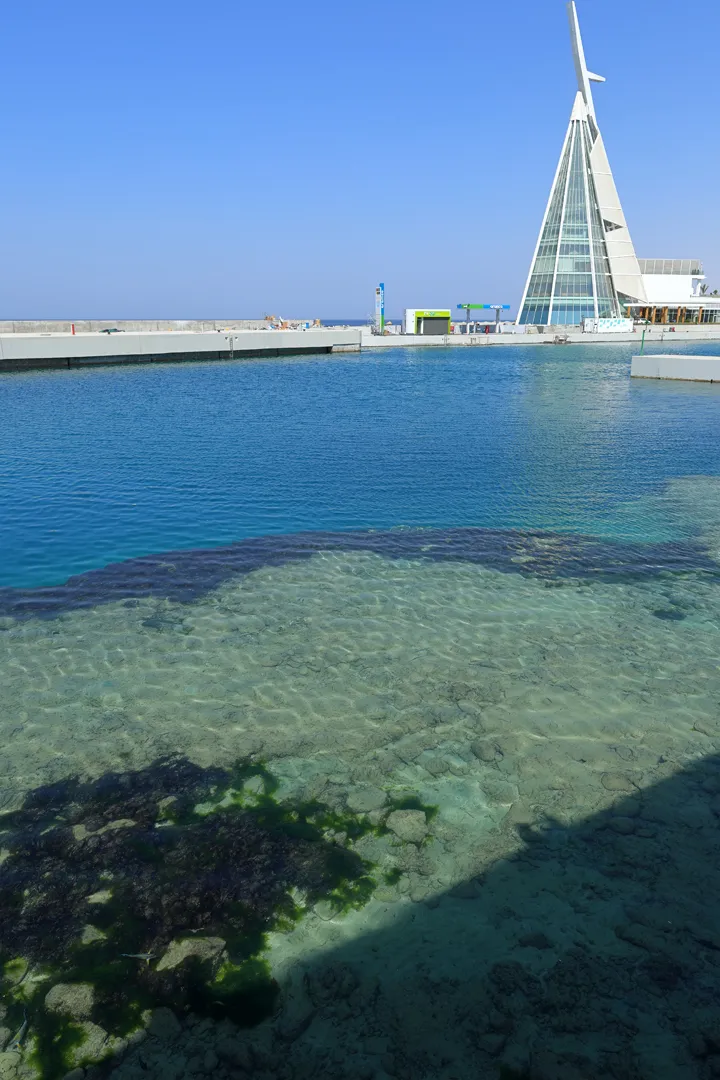
We intended to go further south on the Jeddah Corniche next, but this proved impossible due to construction works for the upcoming F1 Saudi Arabian GP, which incorporates the waterfront road into the track. There was not even a way to get back to a major road to hail a taxi, but a helpful security guard was able to call one for us.
The taxi took us to Al-Balad, the old town of Jeddah, located in the southern part of the city. Jeddah is deceptively large (the population exceeds 3.7 million), so the actual length of this route is more than 25 km. Furthermore, the sprawling layout of the city and the total lack of mass transit make it very expensive to get around.
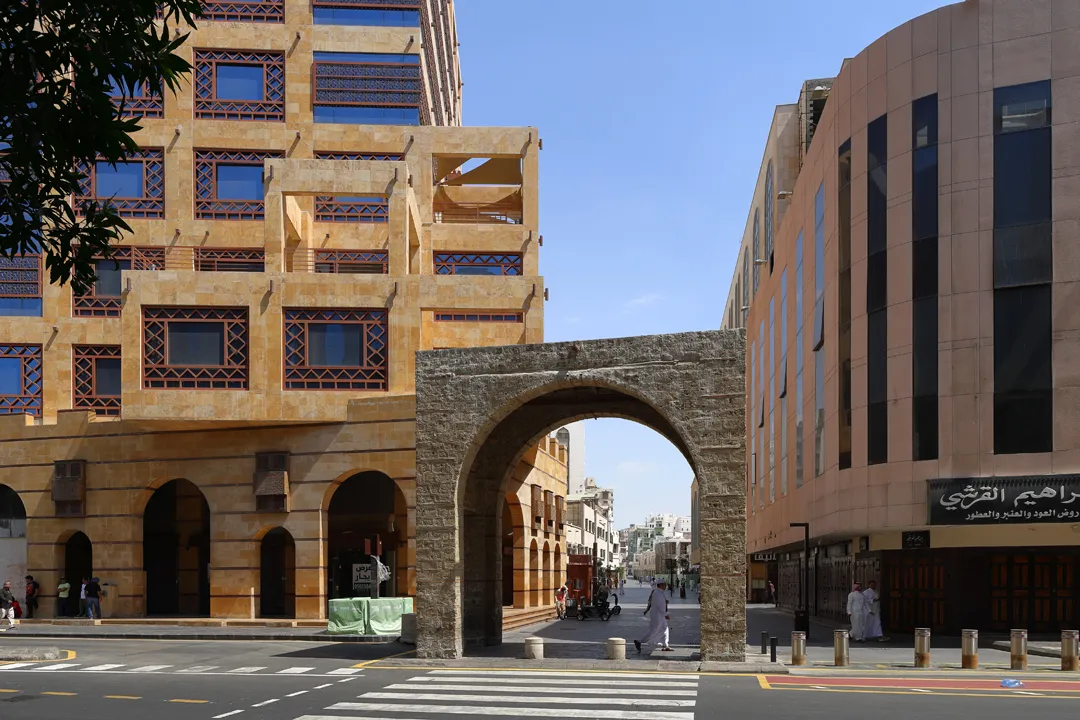
To make matters worse, it was Friday, which is the main day for religious services in Islam, meaning that everything was closed. We still began to walk around because there was nowhere else to go.
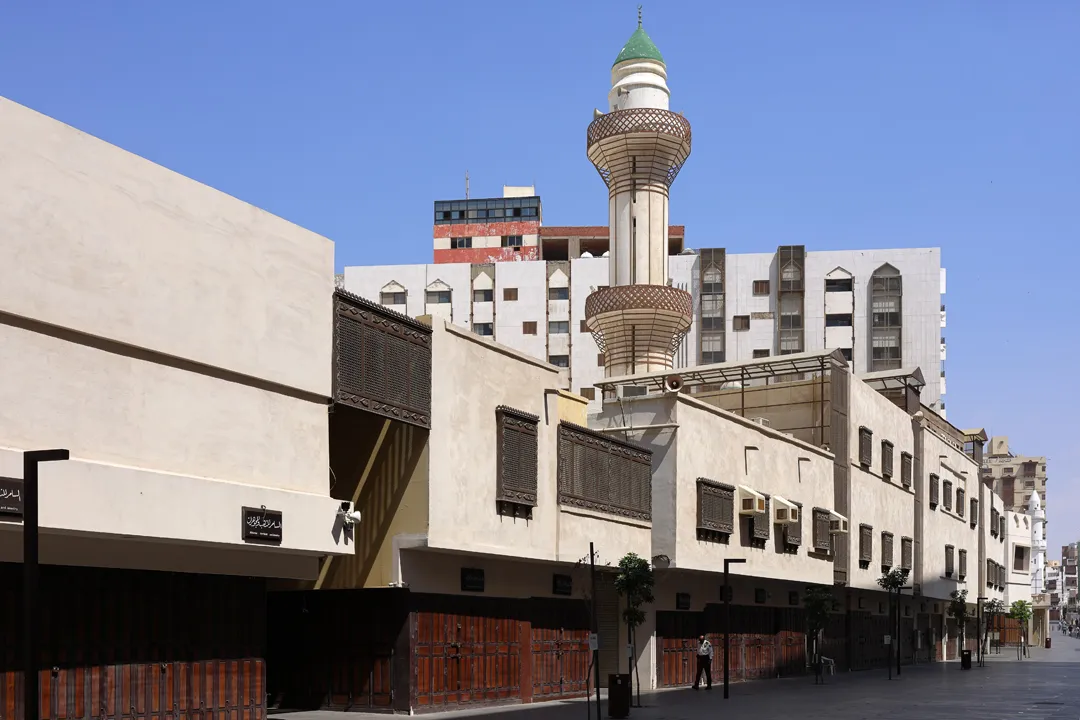
The characteristic feature of traditional architecture in Jeddah is the roshan, a sort of enclosed wooden balcony that allows for ventilation while blocking direct sunlight. Different buildings have uniquely designed and embellished roshan.
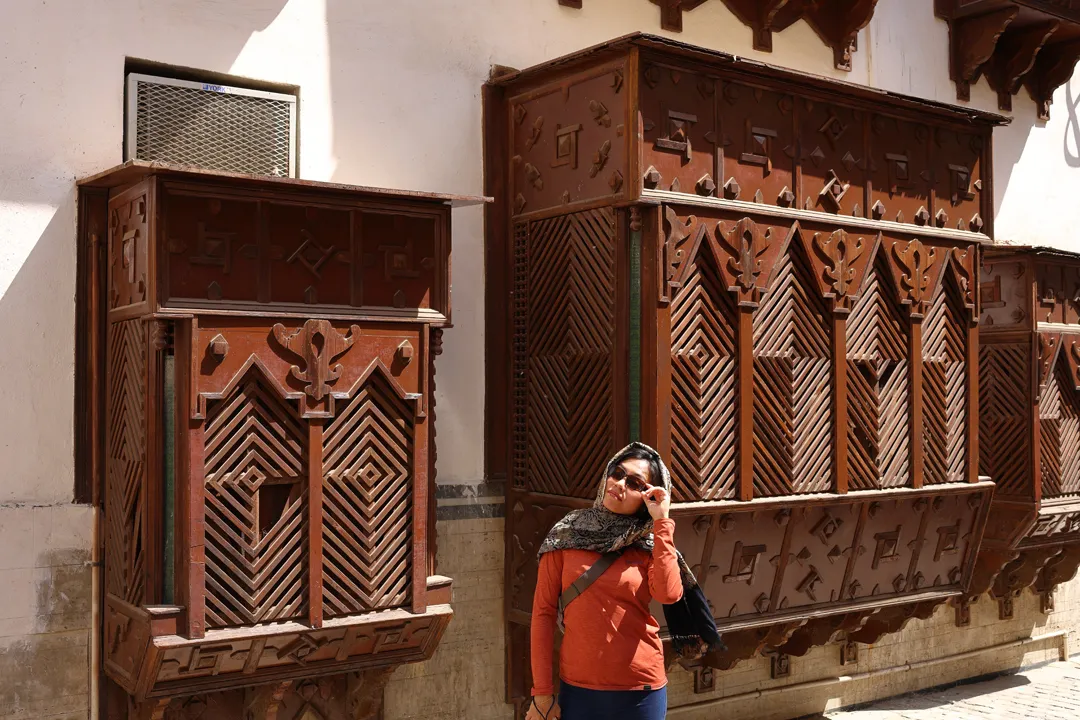
Some designs have nothing in common except for being made of wood.
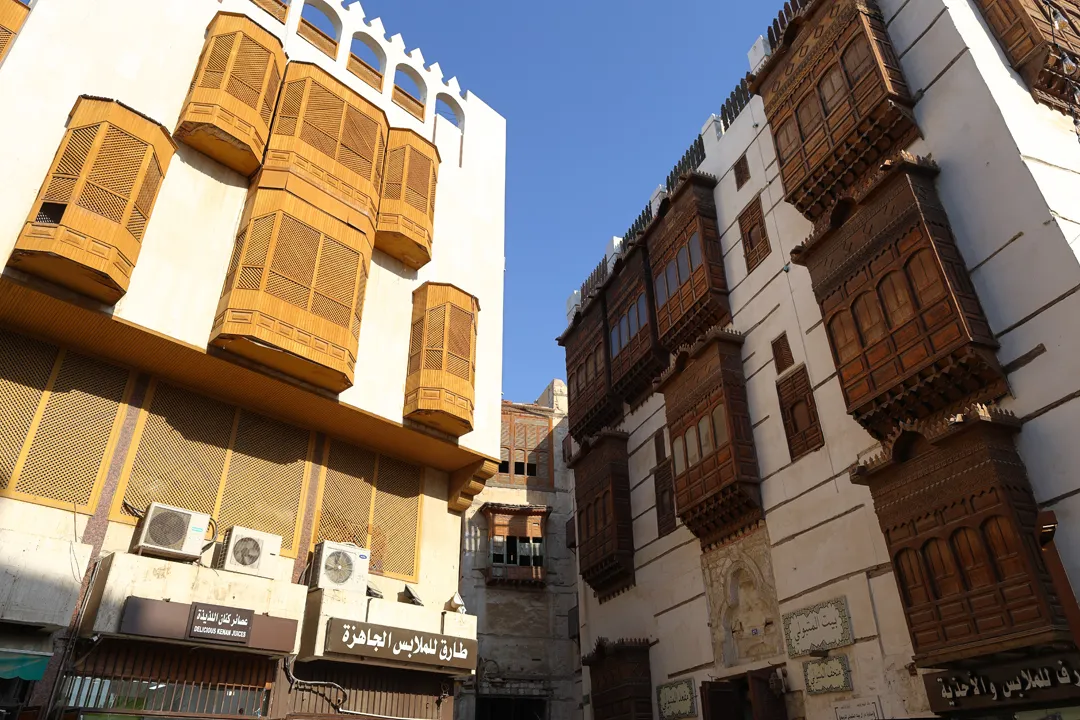
Certain buildings also have more colorful decorations in addition to the roshan.
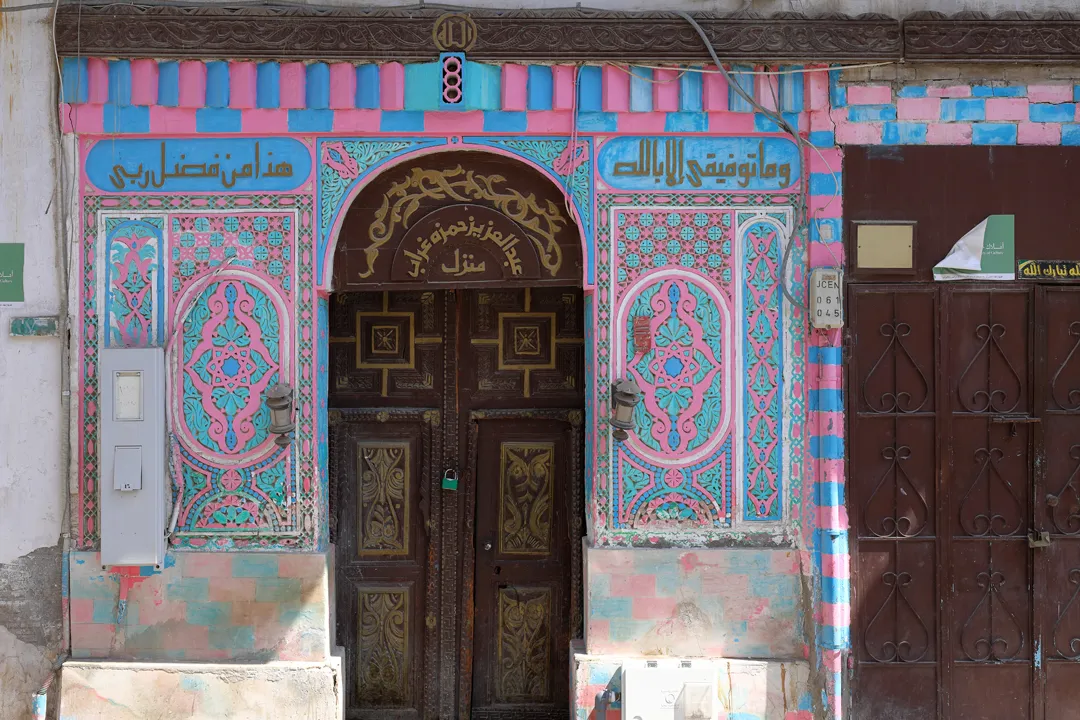
However, there are a lot of unmaintained or abandoned buildings, especially on side streets, which greatly detracts from the ambience.
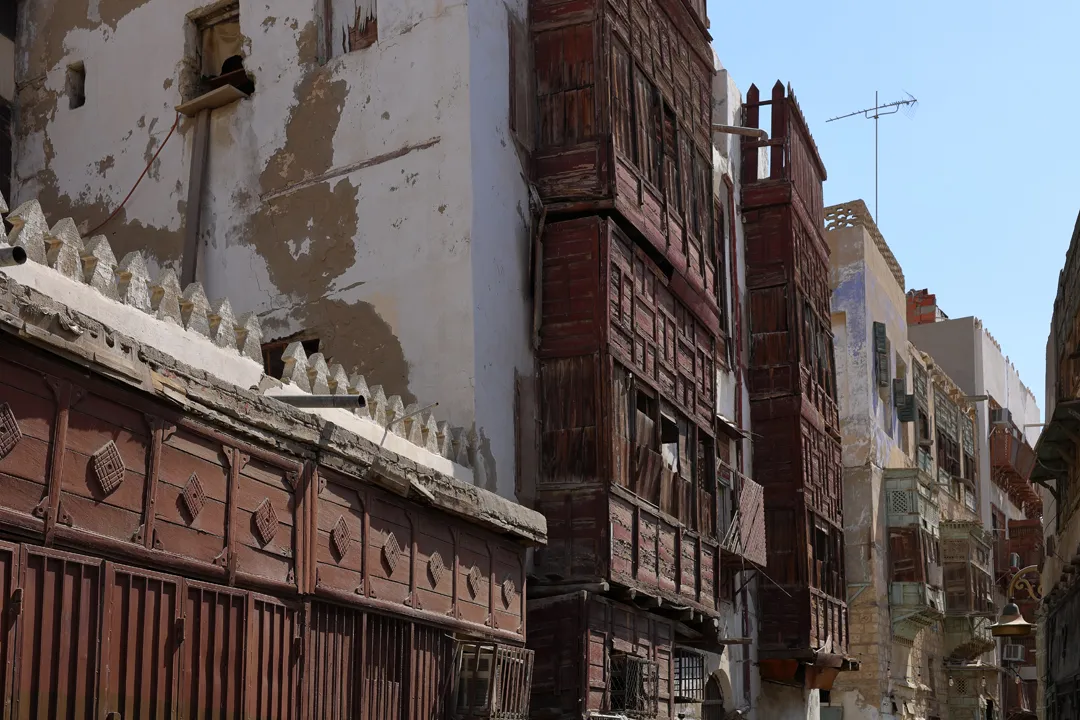
Also, most of the historical buildings are tilted in some way (i.e., the walls are not perpendicular to the ground), which looks strange and potentially dangerous, but at the same time kind of whimsical — with better maintained exteriors, the entire area could become something of an Arabian fantasy world.
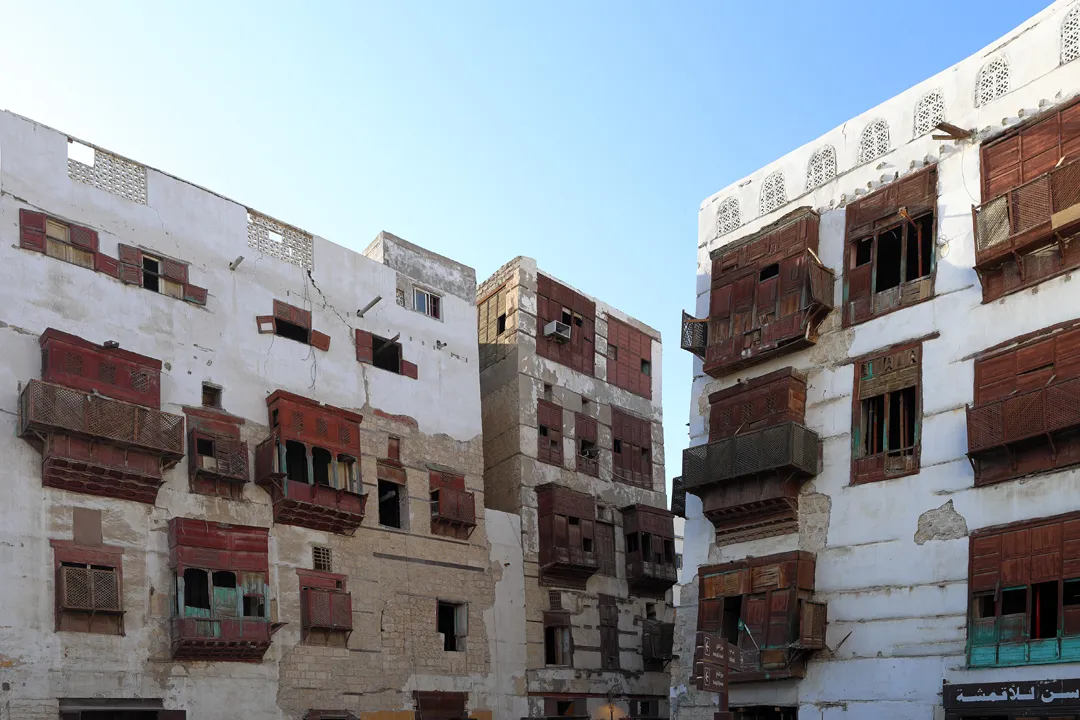
Eventually, we came upon modern buildings, which mark the edge of Al-Balad, and did not continue much further.
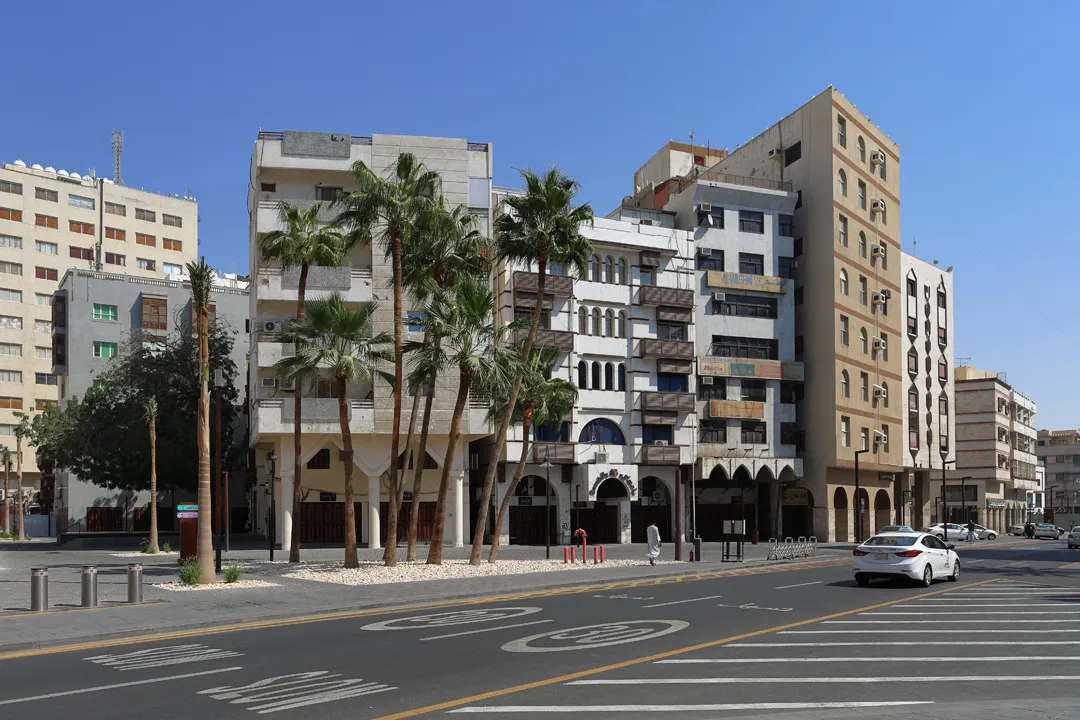
We went back near the central street and found one open café where we could wait two hours for everything else to open and the heat to become slightly more bearable. They served a decent cheesecake, but it was not particularly memorable like the one in Nakhchivan.
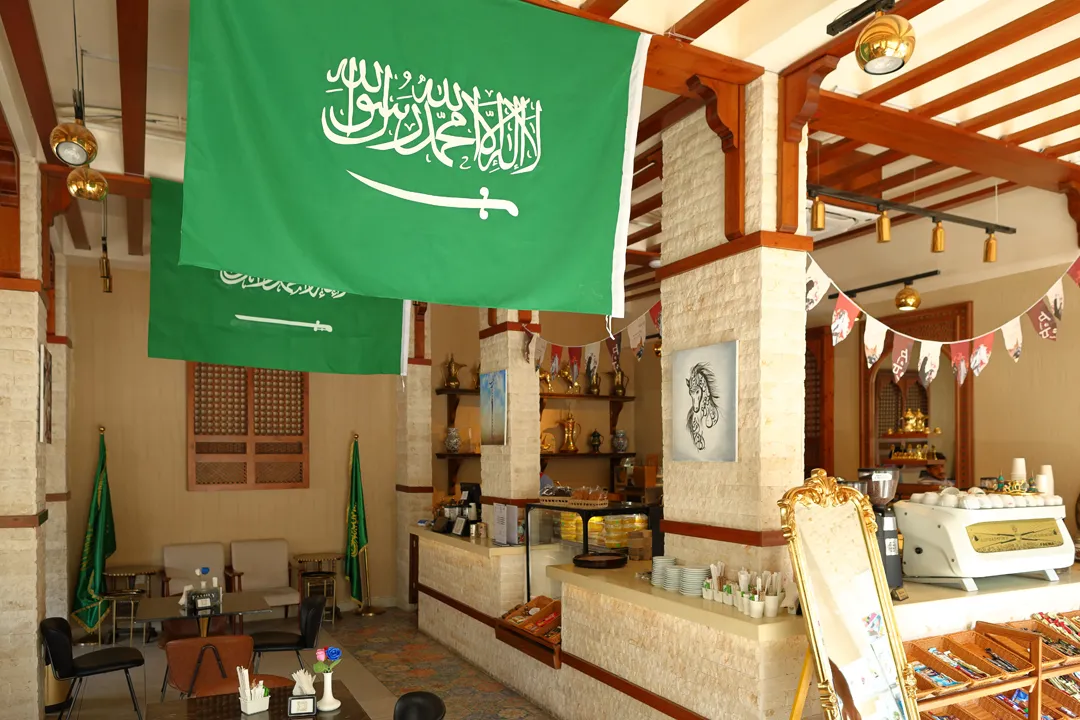
Past 16:00, there were enough shops open to generate a more lively atmosphere.
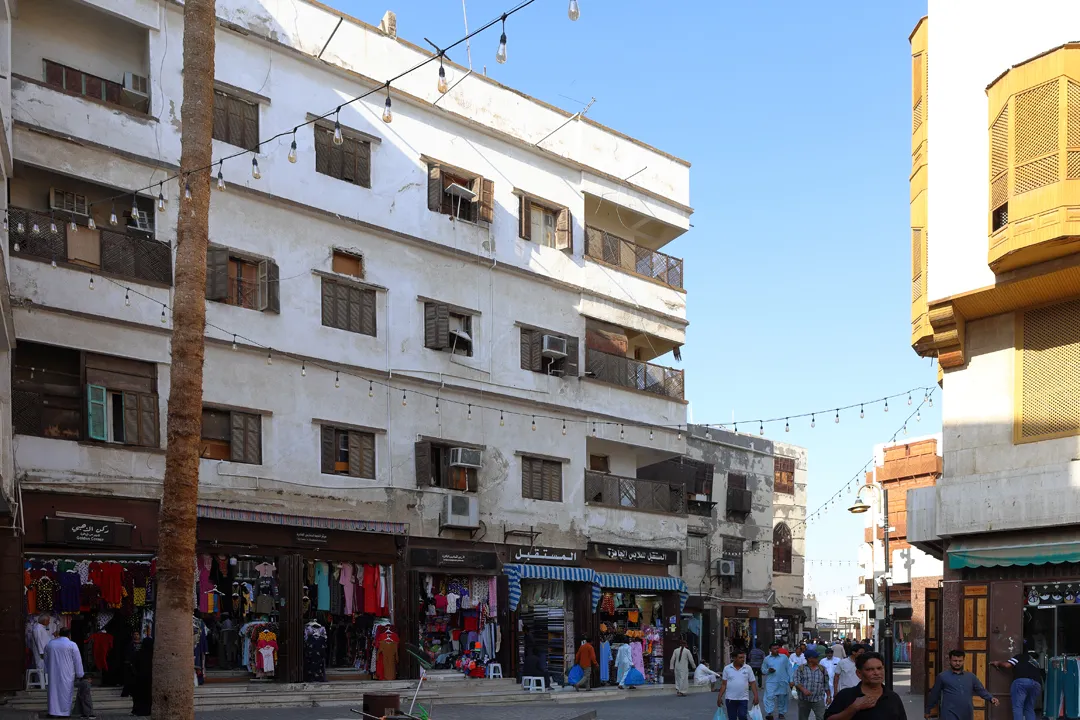
There were still entire streets where nothing was open, though. Only the main east-west street leading from the gate became truly crowded in the late afternoon.
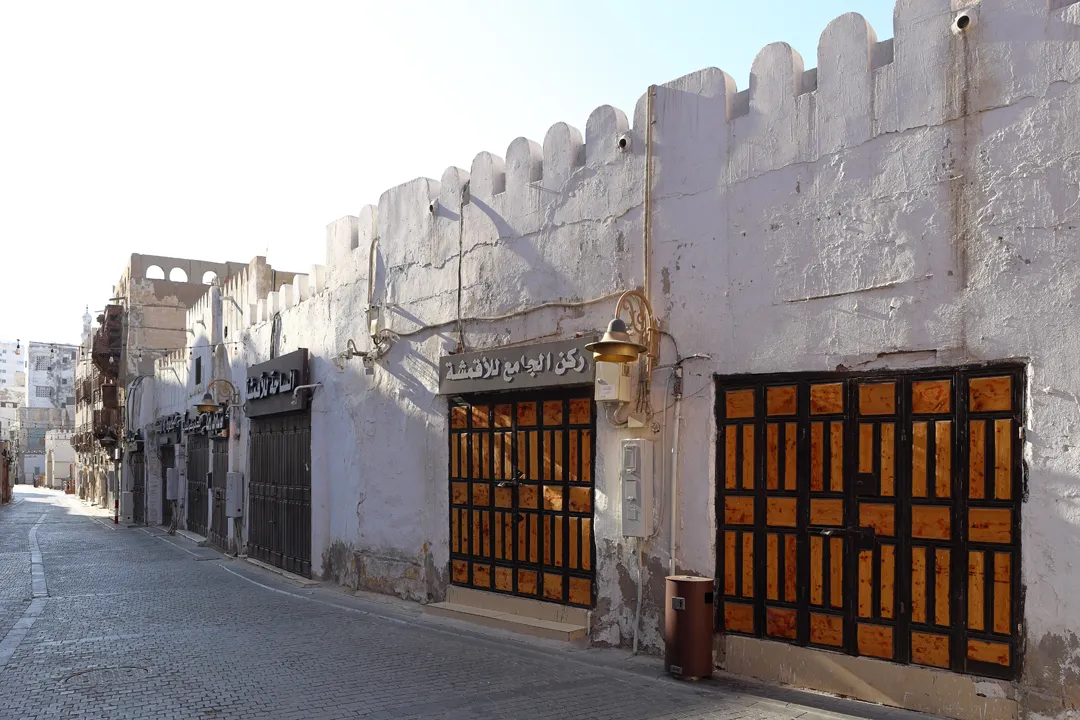
We continued walking around without a map or specific objective. Al-Balad is not very large, only around 1 km from north to south and 400 m from east to west, and most of the streets look different. It is difficult to get lost there.
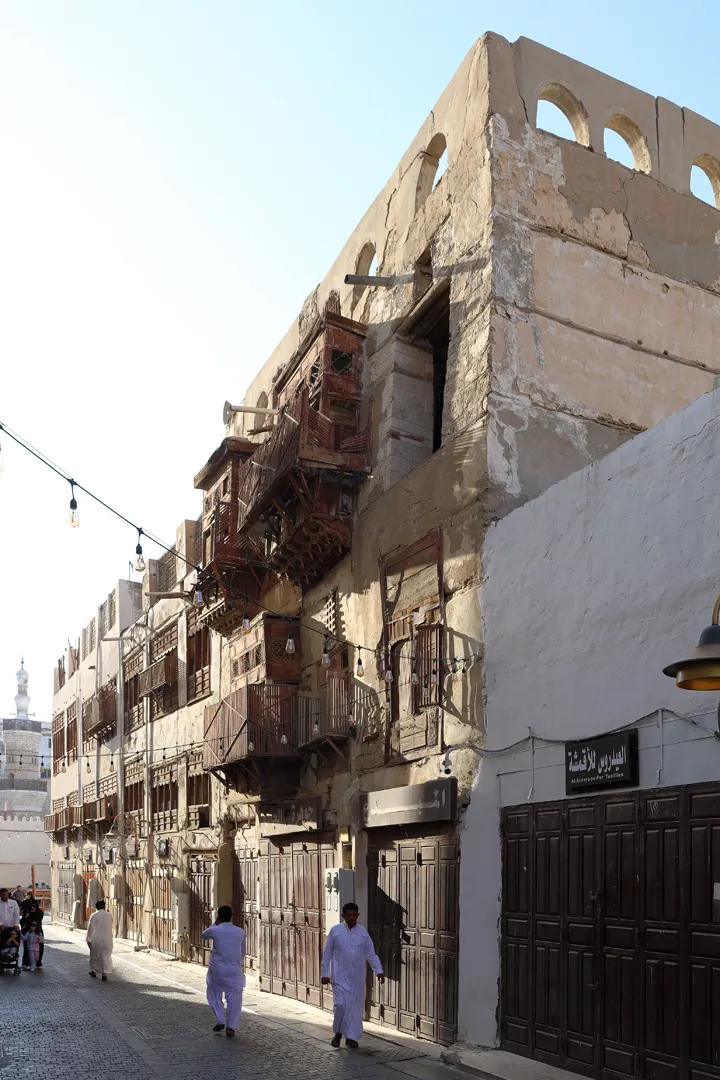
A minority of buildings stand out with brighter color schemes than the typical brown. Green is the more numerous of these variants, matching the color of the flag of Saudi Arabia.
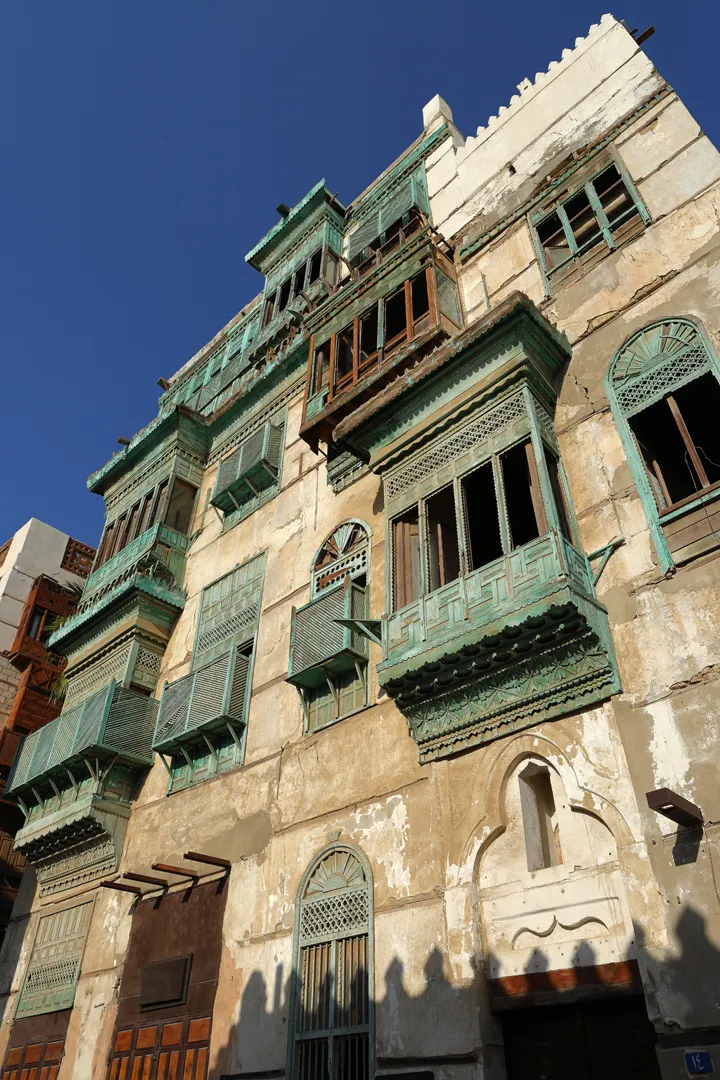
Blue is rare and almost looks out of place in the cityscape, but it is a color that has long been used for decorative purposes in Islamic architecture, for example, at the Karabakhlar Mausoleum in Nakhchivan.
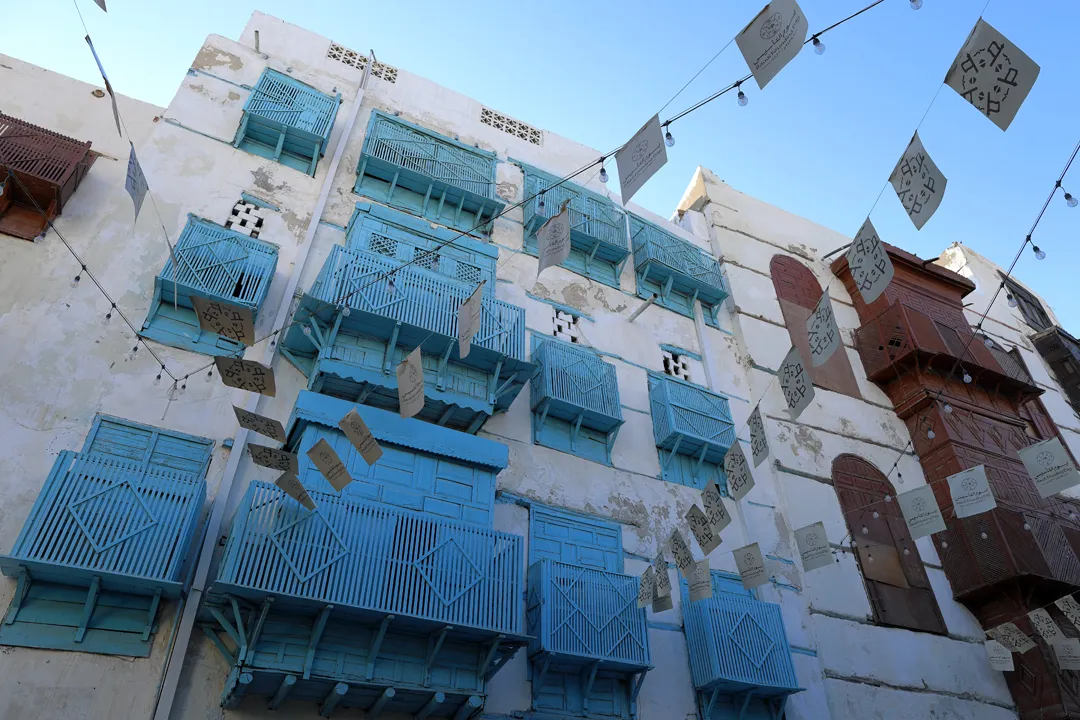
Somewhere in the northern half of the district, we found a mostly demolished building repurposed as a space for art.
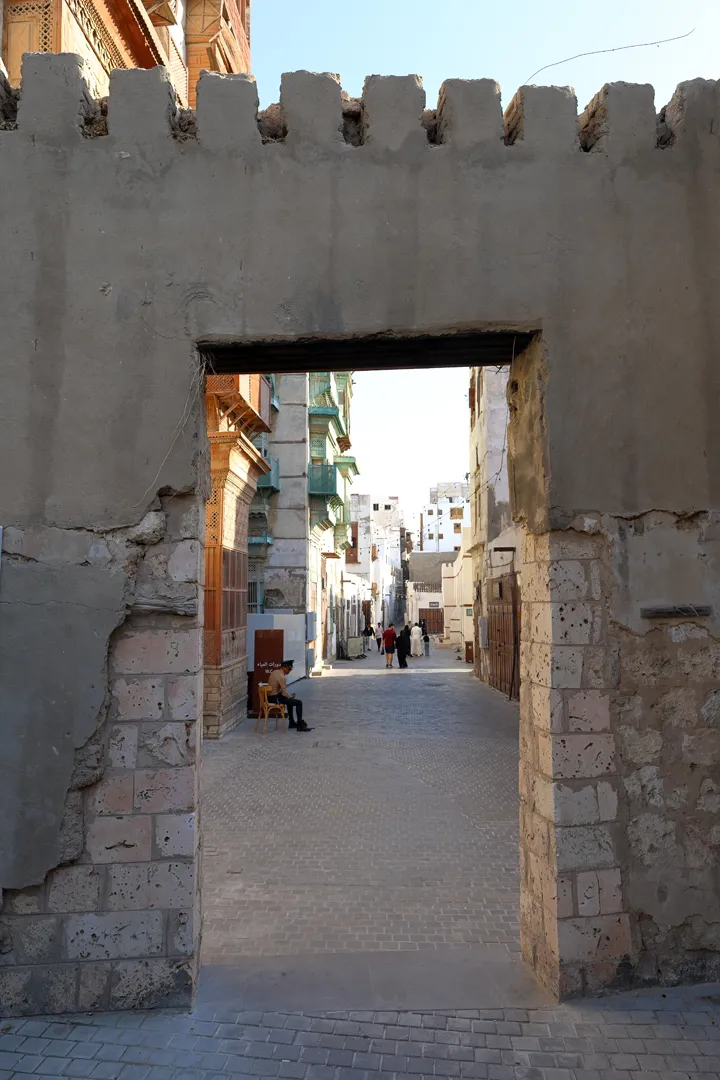
Not all of the artworks were completely finished at the time, but it was still interesting to see the juxtaposition with the surroundings. Incidentally, there are no major art museums in Jeddah at all, since Islamic art tends to not be purely visual and instead manifests in architecture or practical objects.
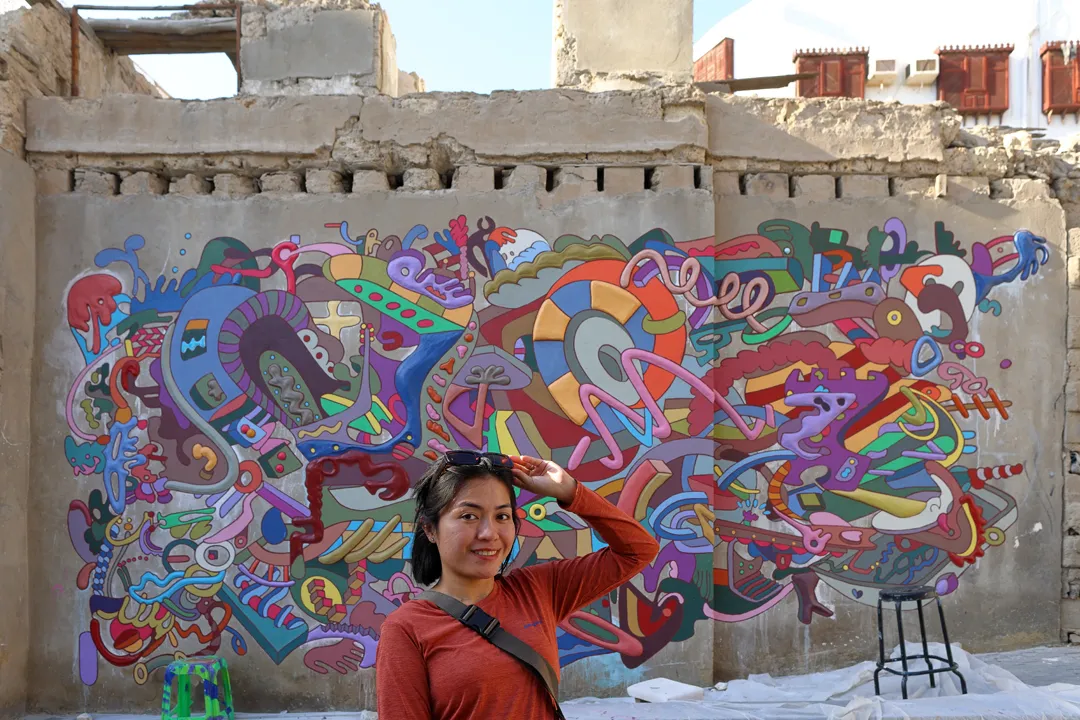
At the northern exit of Al-Balad, there was an event in progress with vendors, games, etc., but we did not really understand what it was about.

We were only able to buy ice cream, and after that, we started to head back because we still wanted to see the sunset at the waterfront later.
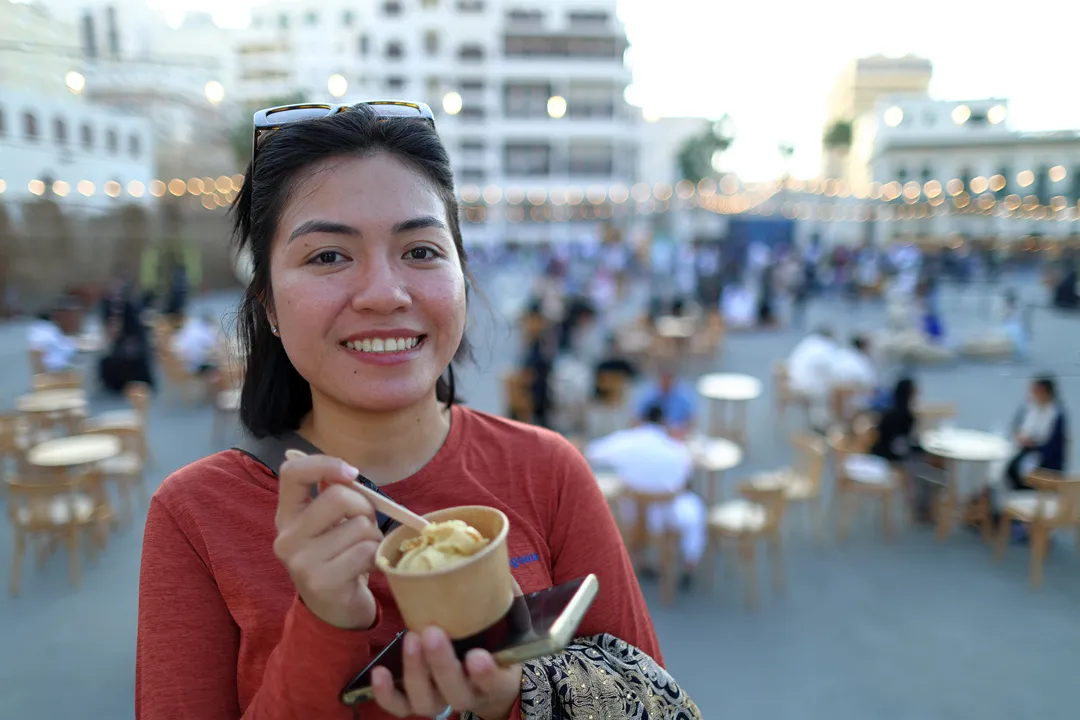
There was a lot of activity by this time in the central area, especially between the main gate and the Nassif House. The Nassif House, perhaps the most famous building in Al-Balad, was originally built by a wealthy merchant in the 19th century and was later used as a residence by Ibn Saud, the first king of Saudi Arabia, when he was in Jeddah.
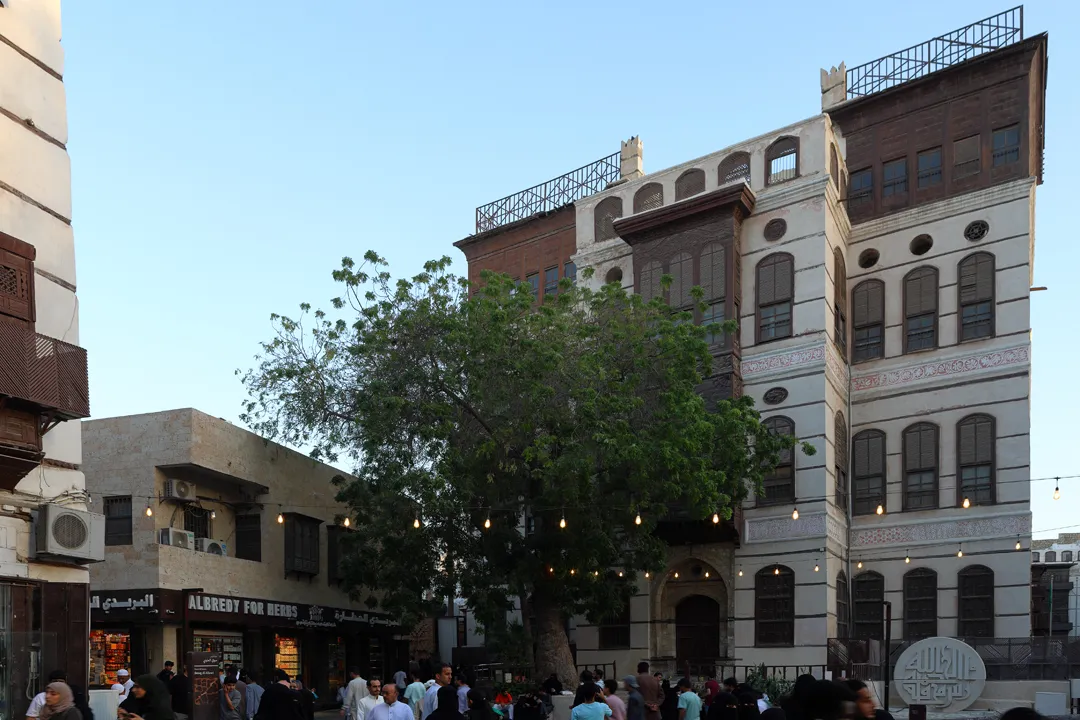
Back at the entrance, we took a taxi again to go and see King Fahd’s Fountain, which is the world’s tallest fountain at 312 m. It is not too far from Al-Balad, so we arrived in time to watch the sunset over the Red Sea.

The fountain is located offshore from a well-developed part of Jeddah containing many Western hotels, and we simply walked east along the main avenue to look for restaurants. However, it still took a while to find one that we could agree on.
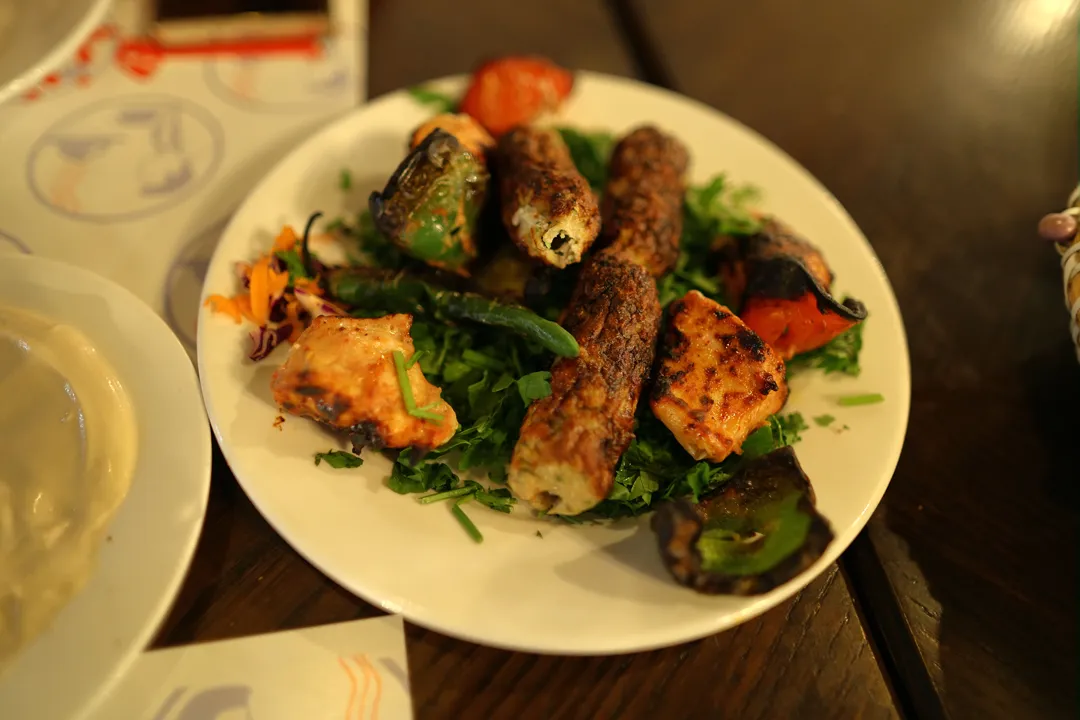
The employees were helpful, and the food was good although nearly all of the dishes on the menu were unfamiliar to us.
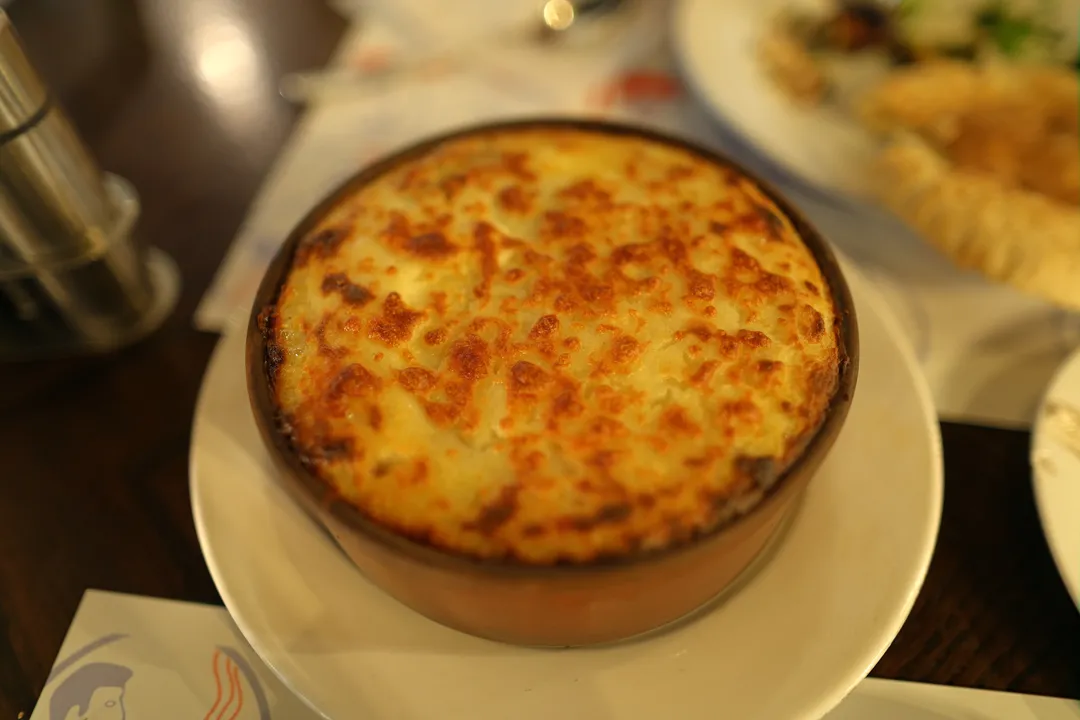
By the time that we finished dinner, it had become completely dark and we needed to retrieve our bags from the hotel and then go to the airport. Getting a taxi took quite some time; there were not many available ones, and we could not trust the first several that we encountered because they lacked meters.
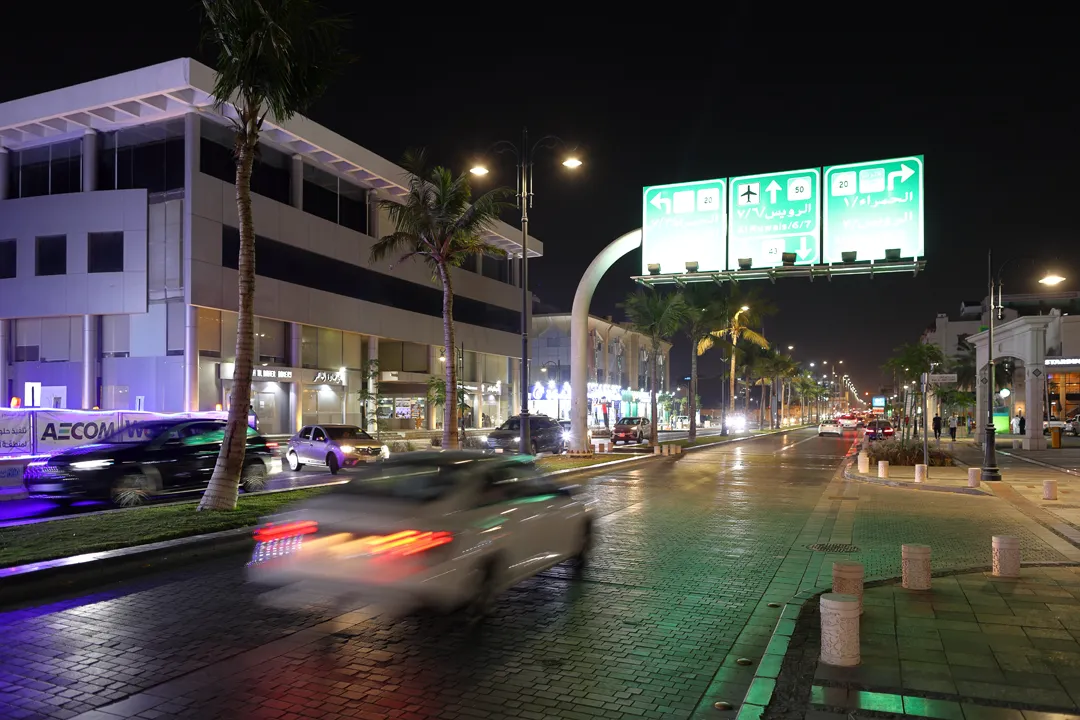
Eventually, we reached the airport four hours or so before our flight and waited in the Saudia lounge. A significant drawback of this lounge is how few showers it has despite its large size. On the other hand, the selection of food is fairly extensive, with the most interesting being camel milk in several flavors.
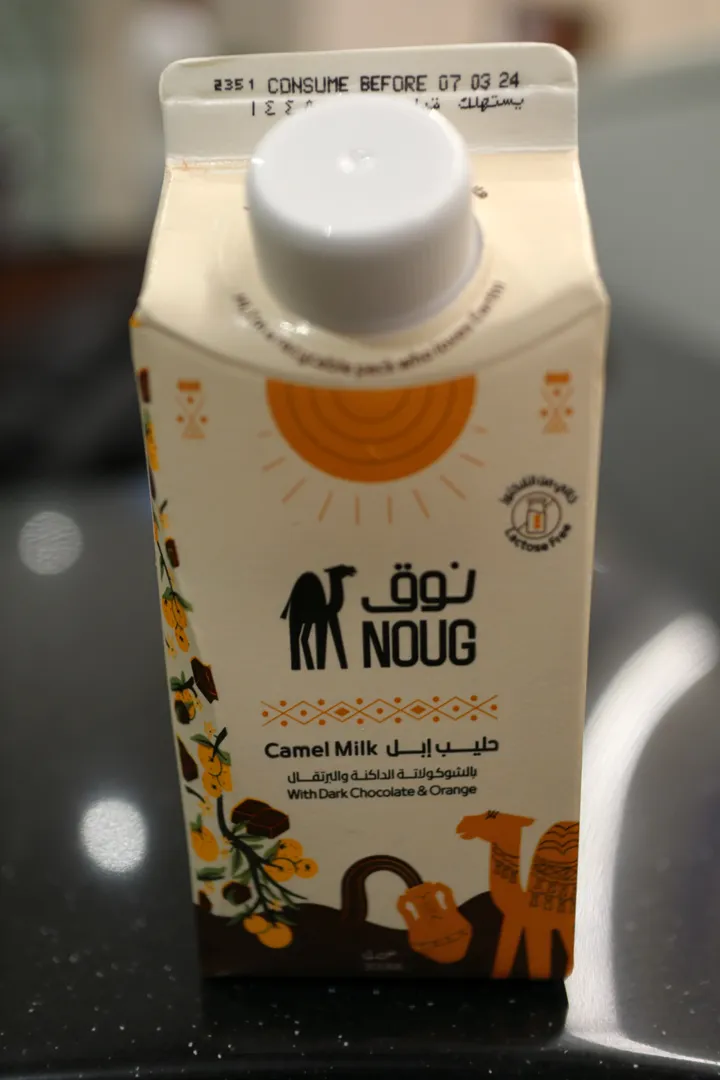
Unfortunately, the flight to Singapore was delayed by one hour due to a mechanical issue and the Saudia gate agents behaved exceptionally unprofessionally, never announcing any information while sitting idly and talking and laughing amongst themselves. Worst of all, they made the economy class passengers queue at the originally scheduled boarding time, forcing them to stand indefinitely while the aircraft was undergoing maintenance.
Thankfully, the flight itself was without incident, and the cabin crew proved far more hospitable than their counterparts on the ground. We were able to get 5-6 hours of sleep and even managed to arrive in Singapore not far behind schedule.

